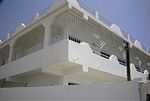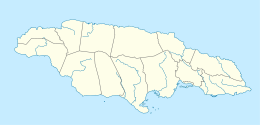Tranquility Bay
| Tranquility Bay | |
|---|---|
 | |
| "Working for the future of the world" | |
| Location | |
Treasure Beach, Jamaica
 | |
| Coordinates | 17°52′14″N 77°45′04″W / 17.87056°N 77.75111°WCoordinates: 17°52′14″N 77°45′04″W / 17.87056°N 77.75111°W |
| Information | |
| School type | private |
| Established | 1997 |
| Director | Jay Kay |
| Accreditation(s) | Northwest Association of Accredited Schools |
| Affiliation | World Wide Association of Specialty Programs |
Tranquility Bay was a residential treatment facility affiliated with World Wide Association of Specialty Programs and Schools (WWASP), that operated from 1997 to early 2009.[1] It was located in Calabash Bay, Saint Elizabeth Parish, Jamaica.[2]
History
The director was Jay Kay, a college dropout with no training in child development,[3] and who is son of WWASP president Ken Kay. The cost for one child ranged from $25,000 to $40,000 a year. Tranquility Bay was generally acknowledged as the toughest of the WWASP schools. As with other WWASP facilities, Tranquility Bay has been the subject of much controversy, including allegations of torture, unsanitary living conditions, unqualified employees, and denial of medical care;[4] these claims have been the subject of multiple lawsuits from former Tranquility Bay residents.[5]
Tranquility Bay stated that it was dedicated to helping parents who are having difficulty with their children, whether they are doing drugs, breaking the law, or being disobedient or disrespectful. In 2003, Kay said "if I have kids, and they start giving me a problem, well, they are going straight in the program. If I had to, I'd pull the trigger without hesitation";[3] however, in 1999, Kay (who at that time was not working for WWASP) said that the Tranquility Bay staff were "untrained", without "credentials of any kind", and that Tranquility Bay "could be leading these kids to long-term problems that we don't have a clue about because we're not going about it in the proper way".[6]
Children as young as 12 were admitted to Tranquility Bay, for reasons ranging from drug use to conflicts with a new stepmother.[6] From 2002 to 2005 the Government of the Cayman Islands sent some delinquent youth to Tranquility Bay; the government funded the students as they were located in Tranquility Bay.[7]
The "Cassie" episode of the A&E program Intervention, first shown in January 2011, features a young woman addicted to prescription painkillers who had been sent to Tranquility Bay as a child and blamed her father for not rescuing her.[citation needed]
Book 'Trapped in Paradise: A Memoir,' released in 2012, details the stay of an attendee of the Tranquility Bay Program.
References
- ↑ Maia Szalavitz, Bad Economy Killing Abusive Teen Programs, The Huffington Post, January 30, 2009
- ↑ Home Page. Tranquility Bay. August 13, 2003. Retrieved on October 2, 2010. "Tranquility Bay, Calabash Bay P.A., St. Elizabeth, Jamaica 876-965-0003."
- ↑ 3.0 3.1 Decca Aitkenhead, "The Last Resort", The Observer Magazine, 29 June 2003.
- ↑ TBFight.com: Tranquility Bay & WWASP website
- ↑ Green, Joanne (2006-06-22). "Rough Love". Miami New Times. Retrieved 2010-04-12.
- ↑ 6.0 6.1 Tim Weiner, Parents Divided Over Jamaica Disciplinary Academy, The New York Times, June 17, 2003.
- ↑ Pioro, Basia. "Controversy surrounds Tranquility Bay." Caymanian Compass. Tuesday 13 July 2006. Retrieved on 9 August 2010.
External links
- Tranquility Bay website, Archive copy at the Wayback Machine